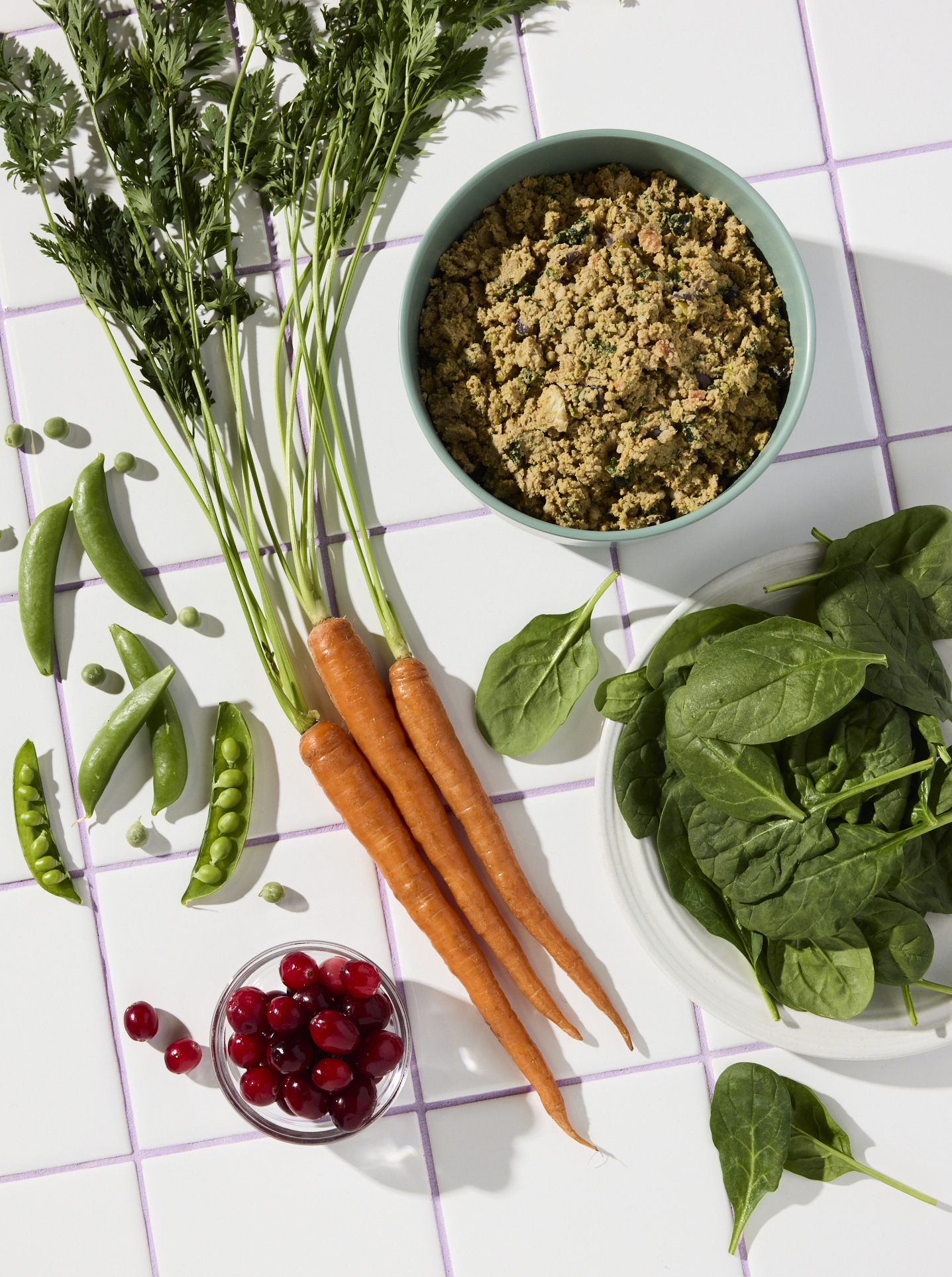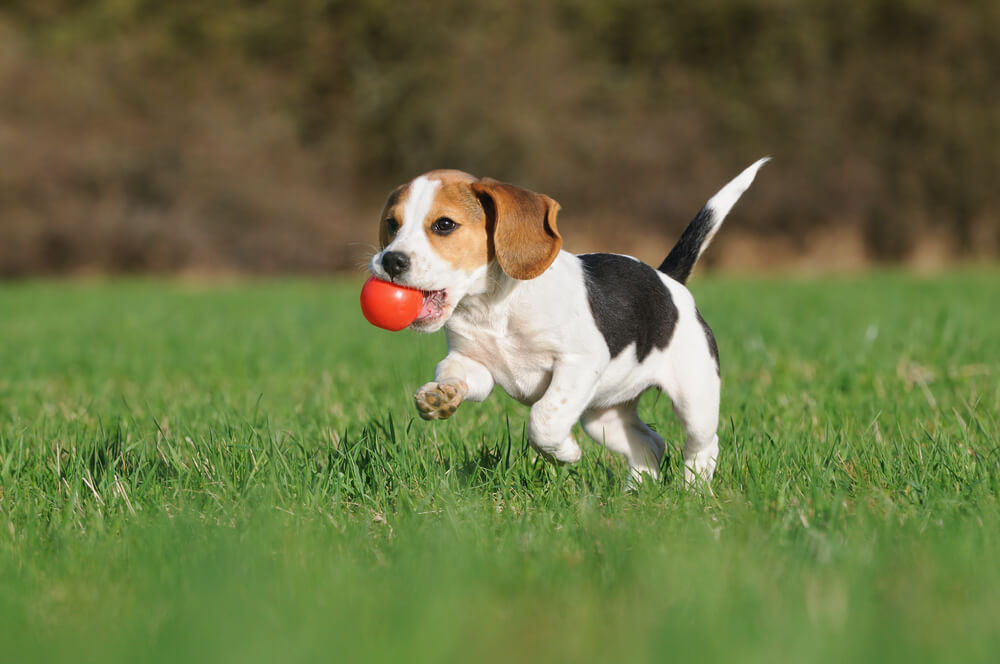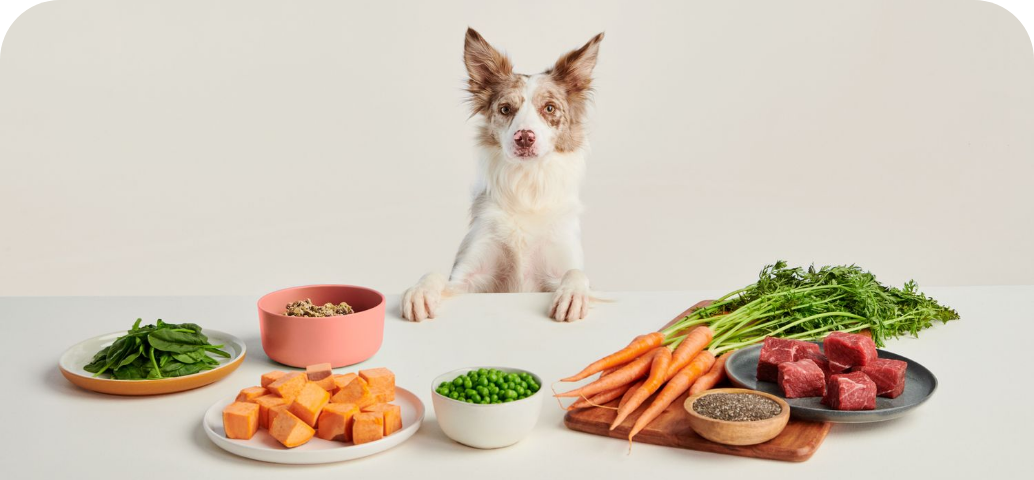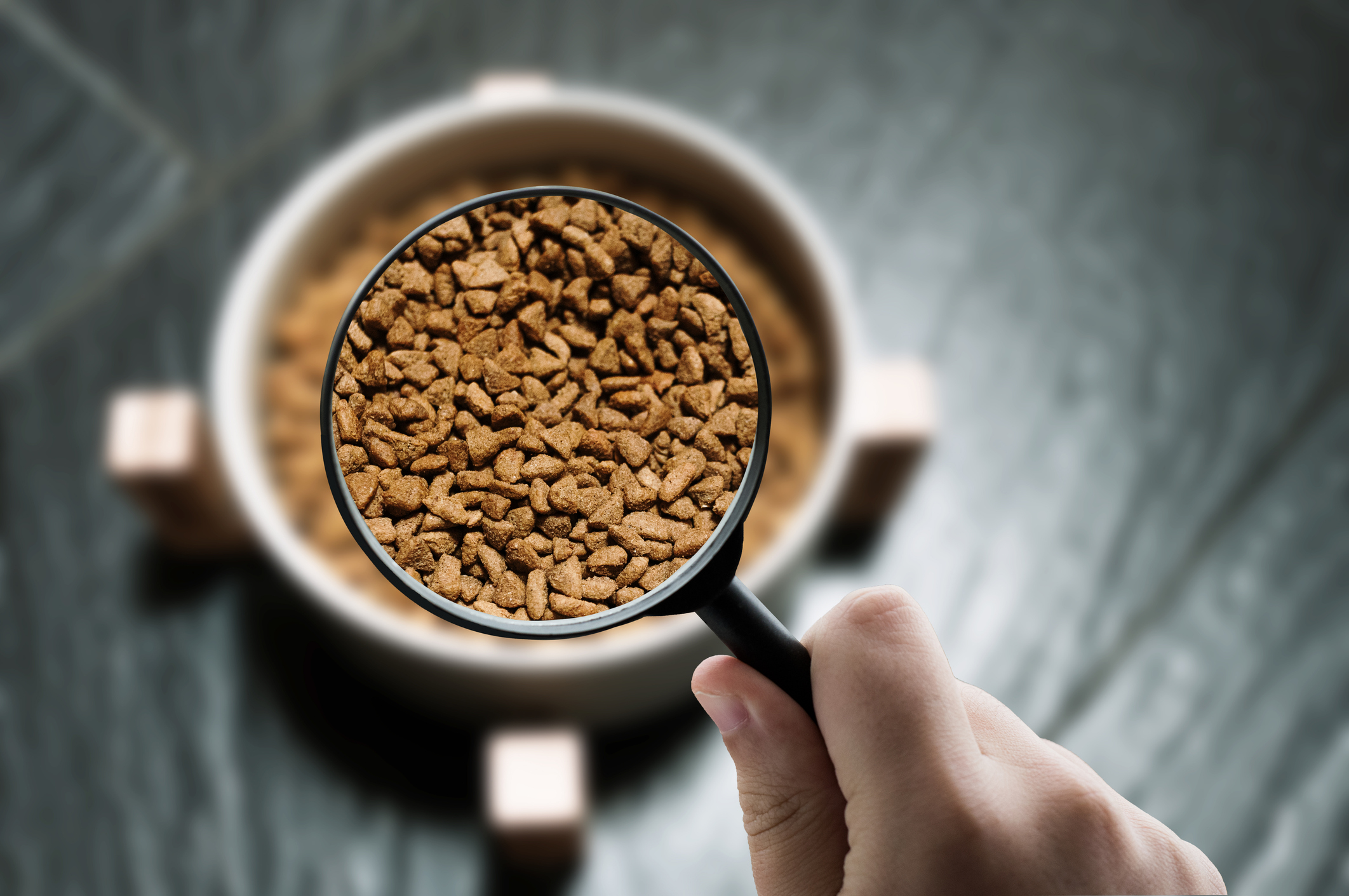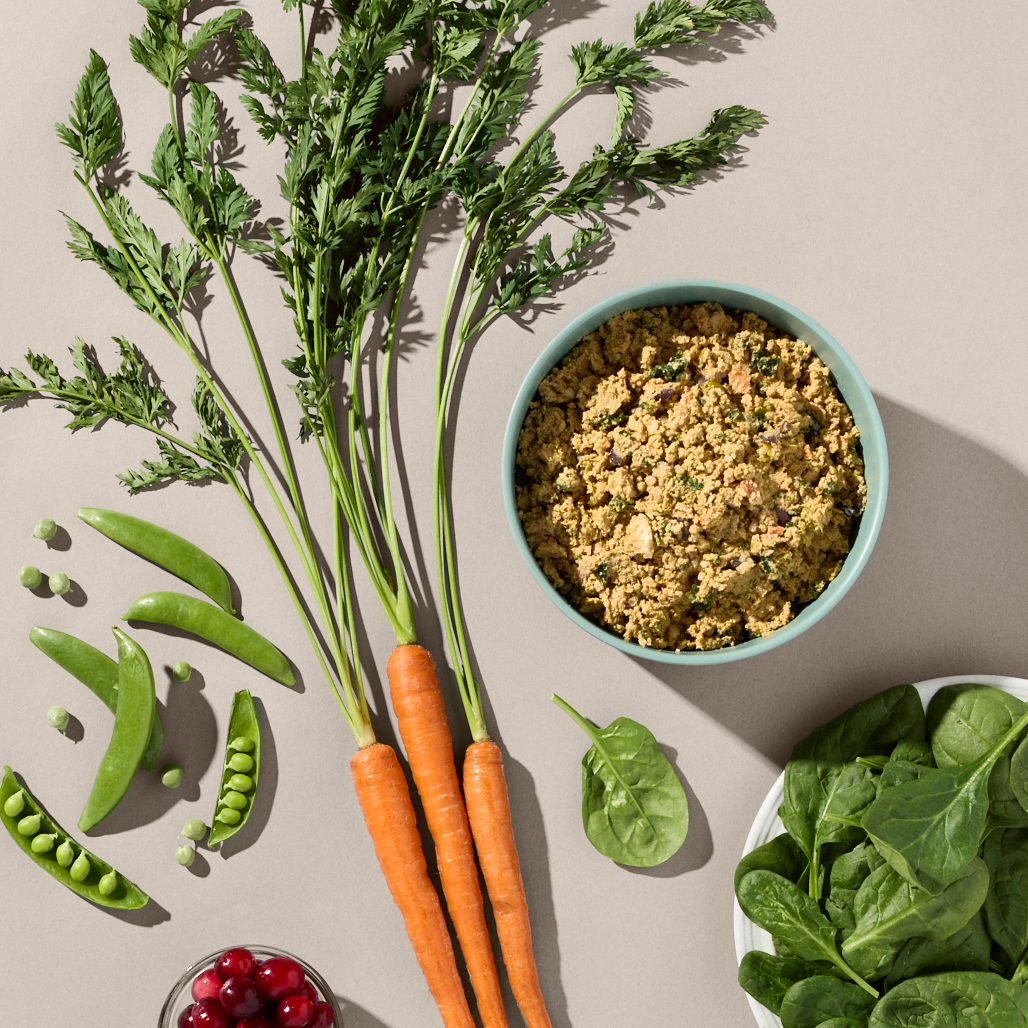Hey Ollie blog readers! We’re offering you an exclusive 60% OFF your starter box! Try now!
Effective digestion isn’t just about breaking down food; it’s about how efficiently your dog can absorb and use the nutrients from their meals. This is where the concept of digestibility becomes crucial. If your pup eats a full bowl but only absorbs a fraction of the nutrients, they aren’t getting the full value of their food.
Some foods, particularly highly processed kibbles, can pass through the system with little benefit or even cause irritation. In contrast, specialized diets made with real, recognizable ingredients are designed for high digestibility. At Ollie, we craft our meals with this principle in mind, ensuring your dog’s body can make the most of every single bite.
In this article, we’ll explore how choosing a highly digestible food can support your dog’s overall health, especially if they have a sensitive stomach.
What Is Dog Food Digestibility?
Not all dog food is created equal. A recipe might look complete on the label, but if its ingredients are hard for your dog’s body to process, it won’t deliver the promised nutrition. This is why understanding digestibility is so important for pet parents.
Defining Digestibility
Digestibility measures how much of the food your dog eats is actually absorbed and utilized by their body. It’s the difference between what goes in and what comes out as waste.
For example:
- If a food has 90% digestibility, your dog absorbs 90% of the nutrients for energy, cell repair, and immune function. The remaining 10% is excreted as waste.
- If a food has only 70% digestibility, 30% of it passes through without providing any nutritional benefit, often resulting in larger and more frequent stools.
Diets made with high-quality, gently cooked ingredients often have higher digestibility than heavily processed kibbles that rely on fillers and low-quality “meat meals”[1].
Why Digestibility Matters for Your Dog’s Health
Choosing a highly digestible food offers tangible benefits that you can often see and feel. When your dog gets more nutrients from their food, their entire body thrives.
- Better Digestive Comfort: Highly digestible food is easier on the gut, leading to fewer instances of gas, bloating, and upset stomachs[2].
- Improved Stool Quality: When more nutrients are absorbed, there is less waste. This typically means smaller, firmer, and less frequent stools[1].
- Enhanced Nutrient Absorption: Better absorption fuels everything from energy levels to brain function. It ensures your dog gets the full spectrum of vitamins, minerals, and amino acids they need.
- Healthier Skin and Coat: Nutrients like omega-3 fatty acids, which are crucial for reducing inflammation and promoting a shiny coat, are better absorbed from digestible sources[3].
At Ollie, our recipes are formulated with veterinary nutritionists to maximize digestibility, ensuring your pup gets the most out of every meal.
Recognizing the Signs of Poor Digestion
Your dog can’t tell you when their stomach is upset, but their body provides plenty of clues. If you notice any of the following signs, it could indicate that their current food isn’t agreeing with them or isn’t being digested properly.
- Loose or Frequent Stools: Consistently soft stools or more than two bowel movements a day can be a sign that nutrients are passing through the gut too quickly to be absorbed[1].
- Excessive Gas: While all dogs pass gas, constant or particularly foul-smelling gas can mean that food is fermenting in the colon instead of being properly digested.
- Vomiting or Regurgitation: Frequent vomiting may signal an intolerance to an ingredient or that the food is too difficult to digest.
- Undigested Food or Mucus in Stool: Seeing visible pieces of food or a slimy coating on your dog’s poop often points to poor absorption and gut inflammation.
- Fluctuating Appetite: If your dog is enthusiastic about eating one day and reluctant the next, they may be experiencing digestive discomfort.
- Dull Coat and Skin Issues: A dog’s skin and coat are often a reflection of their internal health. Poor nutrient absorption can lead to a dull coat, dry skin, or persistent itching[3].
- Low Energy: A dog that isn’t getting enough usable energy from their food may seem lethargic or less interested in play, even after eating a full meal.
If you notice these signs, it may be time to consider a specialized diet designed for sensitive stomachs.
Choosing the Best Ingredients for a Sensitive Stomach
When searching for the best dog food for a sensitive stomach, the ingredient list is your most powerful tool. Focusing on simple, high-quality, and easily digestible ingredients can make a world of difference.
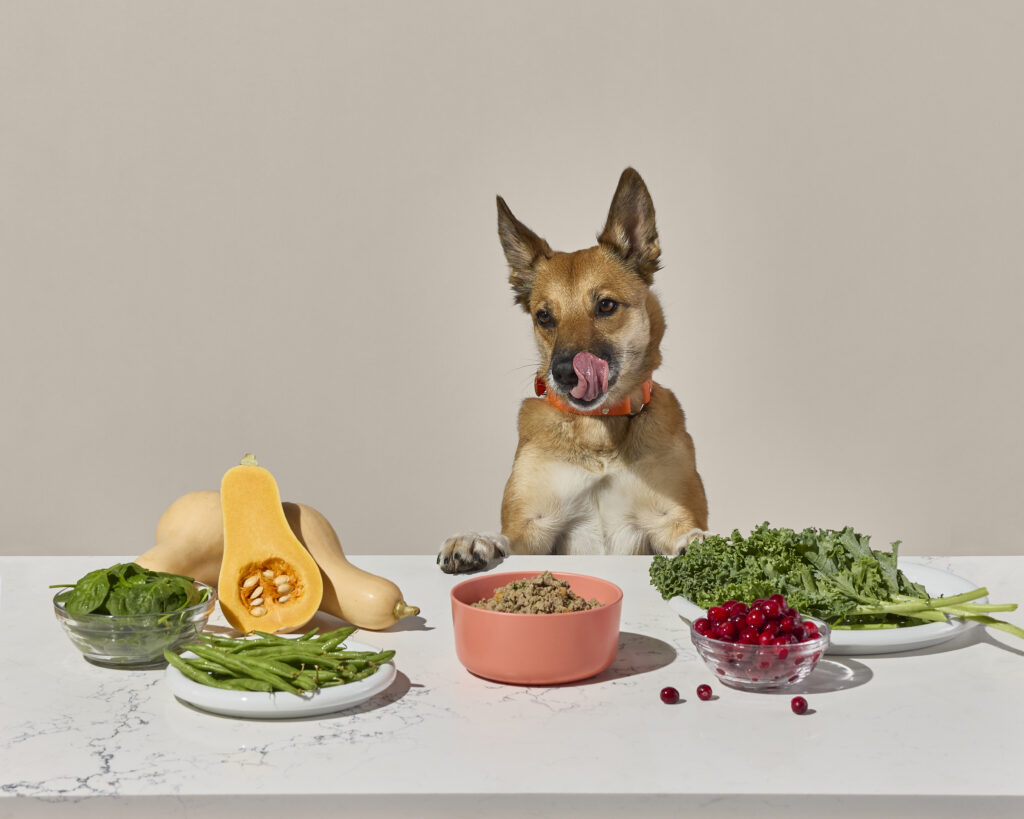
What to Look For: Highly Digestible Ingredients
- High-Quality Animal Proteins: Look for named proteins like chicken, beef, turkey, and lamb as the first ingredients. These provide essential amino acids that are easy for a dog’s body to break down and use[4].
- Gentle Carbohydrates and Fiber: Ingredients like pumpkin and sweet potatoes are excellent sources of soluble and insoluble fiber. They help regulate bowel movements and act as prebiotics, feeding the beneficial bacteria in your dog’s gut[5].
- Healthy Fats: Omega-3 fatty acids from sources like fish oil and flaxseed have anti-inflammatory properties that can help soothe an irritated digestive tract and support skin health[3].
- Functional Superfoods: Ingredients like blueberries (for antioxidants) and carrots (for vitamins) add nutritional value without stressing the digestive system.
What to Avoid: Common Digestive Irritants
- Fillers: Corn, wheat, and soy are common fillers in many commercial dog foods. They offer little nutritional value and are frequent culprits behind food sensitivities and allergies[6].
- Meat Meals and By-Products: These are rendered, heavily processed ingredients that can be difficult for a dog to digest compared to fresh, whole meat[4].
- Artificial Additives: Artificial colors, flavors, and preservatives can disrupt the gut microbiome and contribute to inflammation[7].
- Gums and Thickeners: Ingredients like carrageenan are sometimes used to improve the texture of wet foods but have been linked to gastrointestinal inflammation in some studies[8].
Ollie recipes are built on a foundation of whole, human-grade ingredients and are completely free of fillers, by-products, and artificial additives.
Ready to see the difference real food can make? Take the Ollie quiz to find the perfect recipe for your pup.
Practical Tips for Improving Your Dog’s Digestion
Supporting your dog’s digestive health involves more than just choosing the right food. Simple, consistent habits can help stabilize their system and prevent future issues.
- Switch to a Highly Digestible Diet: This is the most impactful step you can take. Fresh, gently cooked food is often more bioavailable, meaning nutrients are easier for your dog’s body to absorb[4].
- Transition Slowly: When introducing any new food, do it gradually over 7–10 days. Start by mixing a small amount of the new food with the old, and slowly increase the proportion of the new food each day to allow your dog’s system to adjust.
- Maintain a Consistent Feeding Schedule: Feeding your dog at the same times each day helps regulate their digestive enzymes and promotes more predictable bowel movements.
- Ensure Proper Hydration: Water is essential for digestion. Always provide access to fresh, clean water. Fresh food diets also have a high moisture content, which naturally supports hydration[2].
- Limit Table Scraps: Many human foods, especially those that are fatty or spicy, can wreak havoc on a dog’s gut. Stick to healthy, single-ingredient treats in moderation.
- Consult Your Veterinarian: If digestive issues persist, it’s crucial to work with your vet. They can help rule out underlying medical conditions and provide guidance on the best dietary approach for your dog’s specific needs[9].
Why Ollie Is a Great Choice for Sensitive Stomachs
For pet parents struggling to find a food that works for their dog’s sensitive system, Ollie offers a gentle, effective, and nutritious solution. Our recipes are crafted to be as easy on the stomach as they are nourishing.
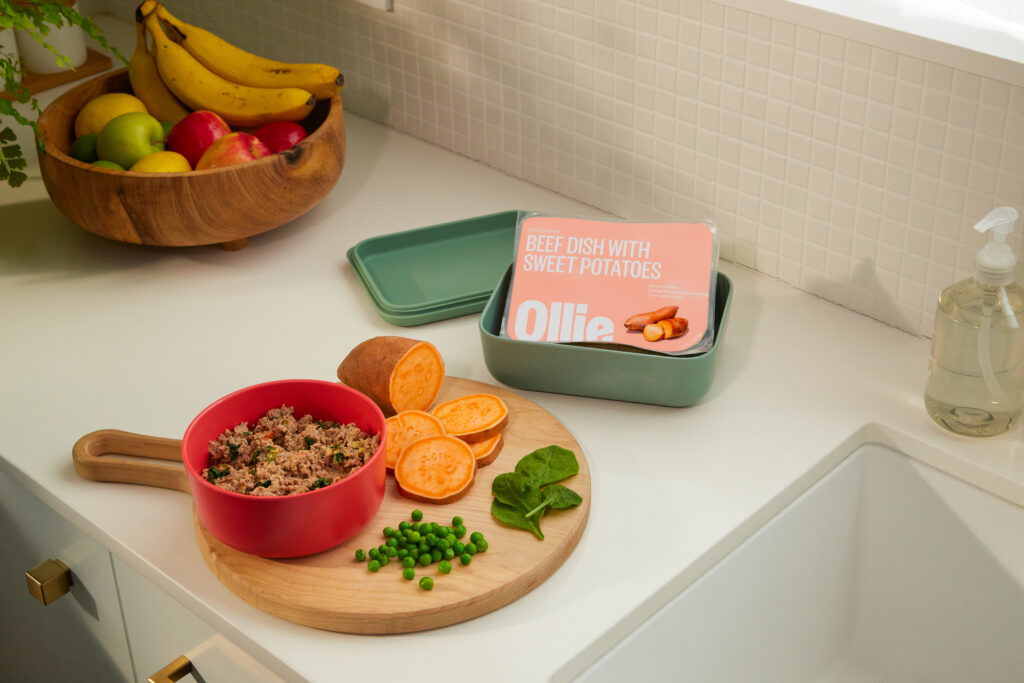
Vet-Formulated for Optimal Digestion
Every Ollie recipe is developed in collaboration with veterinary nutritionists to ensure it is complete and balanced according to AAFCO standards. We focus on:
- Limited, High-Quality Ingredients: We use single sources of animal protein and a balanced blend of fruits and vegetables, minimizing the risk of triggering sensitivities.
- Gentle Cooking Process: Our food is cooked at low temperatures to preserve the nutritional integrity and bioavailability of the ingredients, making them easier to digest than the high-heat extrusion methods used for kibble[4].
- No Fillers or Fluff: You will never find corn, wheat, soy, artificial preservatives, or by-products in our food. Just real, whole ingredients you can see and recognize.
By focusing on quality and digestibility, Ollie provides specialized nutrition that helps soothe sensitive stomachs and promotes long-term health from the inside out.
Find your pup’s recipe for success. Explore Ollie’s highly digestible meals!
Frequently Asked Questions (FAQs)
What is the best food for a dog with a sensitive stomach? The best foods for sensitive stomachs typically feature limited, high-quality ingredients, a single source of easily digestible protein (like chicken or lamb), and no common fillers like corn, wheat, or soy. Gently cooked fresh food is often easier for sensitive dogs to digest than highly processed kibble[4].
How can I tell if my dog’s food is highly digestible? A key indicator is your dog’s stool quality. Small, firm, and less frequent stools suggest high digestibility because the body is absorbing more nutrients and producing less waste. Conversely, large, soft, or frequent stools can mean that much of the food is passing through undigested[1].
Is fresh dog food better for digestion than kibble? Generally, yes. Fresh food is less processed, and its nutrients are often more bioavailable, meaning your dog’s body can absorb and use them more easily. The high-heat manufacturing process for kibble can make some proteins and starches harder to break down[4].
Do older dogs need more digestible food? Yes, as dogs age, their digestive systems can become less efficient. A highly digestible diet with quality protein and controlled fat levels helps senior dogs maintain muscle mass and energy without putting extra stress on their gut[4].
How long does it take to see digestive improvement after switching food? After a gradual transition period of 7–10 days, you may start to see improvements like firmer stools and less gas within a week or two. Other benefits, such as a shinier coat and increased energy, can take a few weeks to become noticeable as your dog’s body fully benefits from the improved nutrition[9].
Citations
[1] https://www.msdvetmanual.com/management-and-nutrition/nutrition-small-animals/nutrition-in-dogs
[3] https://www.petmd.com/dog/nutrition/evr_dg_whats_in_a_balanced_dog_food
[4] https://www.merckvetmanual.com/management-and-nutrition/nutrition-small-animals/nutrition-in-dogs
[5] https://www.whole-dog-journal.com/food/how-to-determine-whats-special-about-a-specialized-dog-food/
[6] https://www.fda.gov/animal-veterinary/animal-health-literacy/food-allergies-dogs
[7] https://www.ncbi.nlm.nih.gov/pmc/articles/PMC6723656/
[8] https://www.ncbi.nlm.nih.gov/pmc/articles/PMC4586543/
[9] https://www.avma.org/resources-tools/pet-owners/petcare/digestive-disorders-dogs
Tagged As:

The nutrition your dog needs,
the food they want.

Enjoying our articles? Subscribe our Newsletters and get new articles directly to your inbox
You might also like
29 October 2025
5 MINS READ
Why Fresh Meals Are the Best Healthy Dog Food Alternative
As a pup parent, you’re always looking for ways to give your dog a happier, healthier life, and seeking healthy dog food alternatives that go beyond kibble is a great place to start. If you’ve bee…
by Ollie Pets
24 October 2025
6 MINS READ
Is Kibble Enough Nutrition? The Best Healthy Dog Food Alternatives
For decades, kibble has filled the bowls of pups everywhere as the default option for a dog’s diet, but is it truly enough? We’re diving into the world of canine nutrition, examining the limit…
by Ollie Pets
24 October 2025
5 MINS READ
How to Choose the Best Fresh Dog Food in 2025
With so many choices, what truly defines the best fresh dog food in 2025? We’re moving beyond the one-size-fits-all approach of traditional kibble and seeking nutrition that helps our dogs truly…
by Ollie Pets
